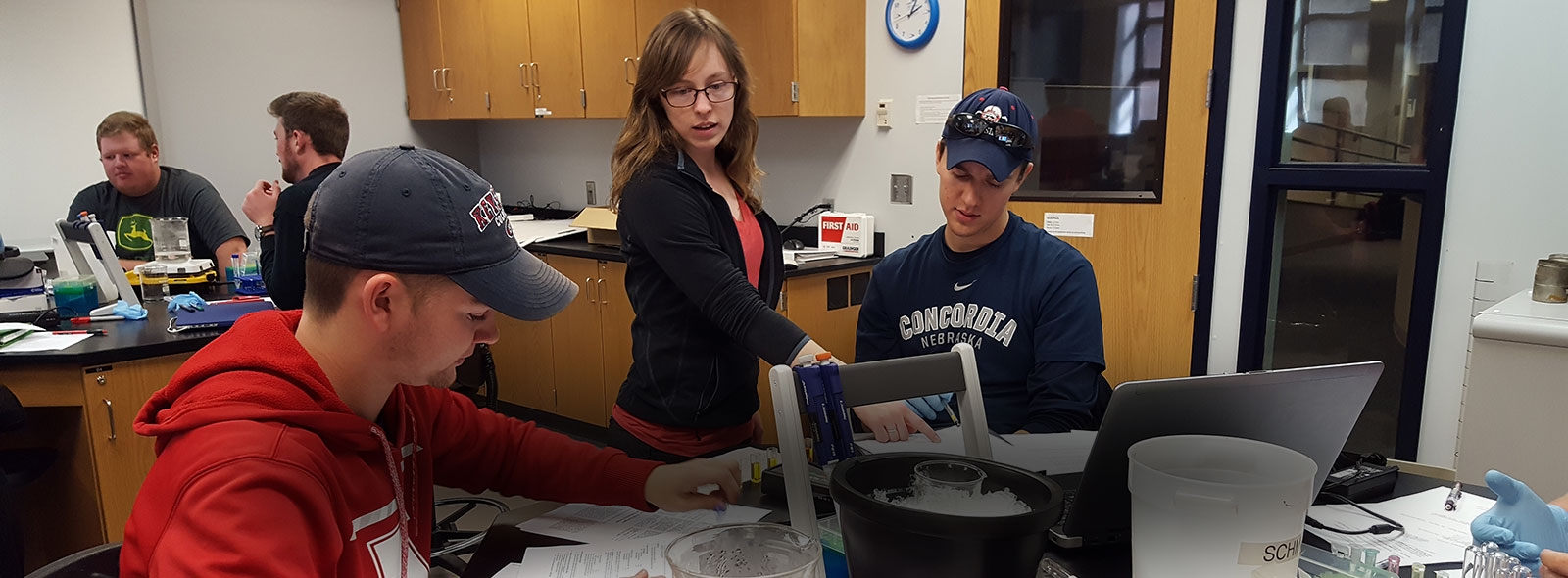Ellen Emanuel
Master’s student, Agricultural and Biological Systems Engineering
Gretna, Nebraska
Advisor: Dr. Deepak Keshwani
Graduated: December 2017
As a master’s student researching bioenergy, Ellen Emanuel has moved far beyond a textbook understanding of the subject but says the greatest lesson she has learned at the University of Nebraska is how to learn.
“The world is one big open-ended problem,” she says, “and you’re not going to have all the information you want or need all of the time. You have to move forward anyway. You can’t just get stuck because you don’t have all the answers. I feel like my time in school and doing research has helped with that. You just have to try something, and if it doesn’t work, that’s OK. You just try something else.”
This attitude has served her well as she works with SuperPro Designer software to try to improve the process of producing ethanol from stalks and other leftover plant matter (referred to as “lignocellulose”) instead of from corn kernels, as is typically done. She explains her work with this software as being similar to playing the old video game “RollerCoaster Tycoon.”
“For RollerCoaster Tycoon, you’d build a rollercoaster and watch your amusement park make money or lose money and look for ways to improve your park,” she says. “The software I’m using now kind of does that with ethanol production. You put in the heat exchangers and the fermentation tanks and conveyor belts, all the production steps of the process, and then it simulates what happens. So you can see 'If I put this much material in, this is how much ethanol I get.’”
Ethanol is produced when starch in corn kernels or leftover plant materials breaks down into glucose sugars that yeast feed on and ferment. Emanuel’s goal is to improve the process of drawing the most ethanol from the leftover plant materials. She is focusing on one step of the process, hydrolysis, when water is used to break down the cellulose into sugars. Specifically, she is comparing the standard way this is done, “batch hydrolysis,” with “fed batch hydrolysis.” She explains the difference between the two methods as similar to baking cookies.
“So, if you think of a batch of cookies, you put one in the oven, pull it out, put the next one in the oven, pull it out, and it’s like one at a time,” she says. “Whereas fed batch would be you put one pan in the oven, then you put a second pan in the oven, a third pan in the oven. Let them all cook and pull them all out. Which, it doesn’t work so well for cookies because, obviously, they would burn, but it works for breaking down cellulose because it maximizes the time that the enzyme can have access to it.”
Emanuel’s work with SuperPro Designer software to figure out which method of hydrolysis is most efficient and productive is the type of work a process or project engineer might do at an ethanol plant or another manufacturing facility. Nebraska is second in the nation in ethanol productivity, so working at an ethanol plant is a better possibility here than in most states, but Emanuel says she will be open to all job opportunities when she graduates in August. She is grateful for educational opportunities like learning by using SuperPro Designer, which only a big school like UNL could likely afford students.
“At a smaller college, they say, ‘We have great programs in science and music’ or ‘a great program in English,’ but at UNL, they have great programs in everything,” Emanuel says. “I knew if I came here, I could do whatever I wanted. With the preparation UNL has given me, I now feel ready to tackle the problems of industry in finding sources of alternative energy and making the most of our current resources.”
— Ronica Stromberg, Biological Systems Engineering Department
